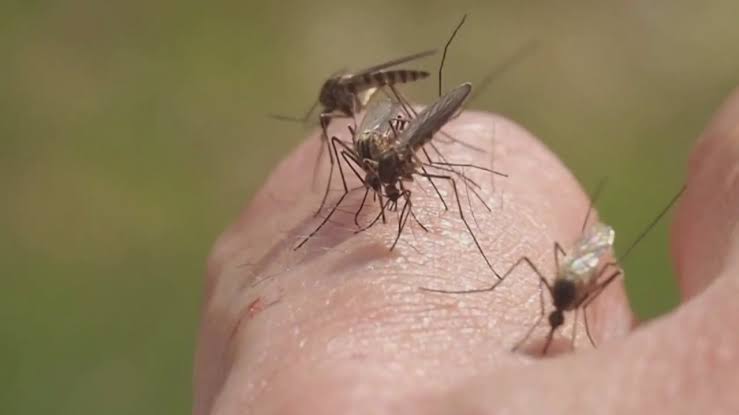How the yellow fever mosquito found its first human victim

Some 500 years ago, a city-living, human-biting form of the yellow fever mosquito Aedes aegypti began to hitch rides out of West African ports during the Transatlantic Slave Trade. It spread to the Americas and then to Asia, causing centuries of disease outbreaks to ripple through the colonial world. Today, its globally invasive descendants act as the main disease vector for the yellow fever, Zika, chikungunya, and dengue viruses, collectively causing hundreds of millions of infections each year.
But how, exactly, the yellow fever mosquito first evolved to bite people, priming it to stow away on ships and thrive in new destinations, is murkier. Researchers agree on the outlines of the story: A subpopulation of A. aegypti split from a harmless ancestor that preferred to live in forests and feed on animals, not people. “The thing we didn’t know was when, how, or why all that happened,” says Noah Rose, an evolutionary biologist at the University of California (UC), San Diego. Now, Rose has led a genomic analysis that concludes the fateful split occurred about 5000 years ago, during a period of natural climate change in the West African Sahel, at the southern border of the Sahara.
“We were able to really tell the natural story of A. aegypti using the genome,” says Athanase Badolo, an entomologist at Joseph Ki-Zerbo University in Ouagadougou, Burkina Faso, who helped collect mosquitoes and co-authored the study. Those genomes also revealed a hint of rapid, ongoing evolution that in just the past few decades allowed the species to prey on humans and likely spread disease even more efficiently in African cities. About these findings, “The [researchers] have presented compelling evidence,” says R. Nicolas Lou, a population geneticist at UC Berkeley who wasn’t involved with the current study.
Rose’s team began by sampling different yellow fever mosquito populations from both forests and cities. In 2020, the researchers reported that mosquitoes showing the strongest preferences for human odors seemed clustered in arid, urban communities in the Sahel, suggesting the first human-focused mosquitoes likely evolved there, drawn to towns because they offered dense human populations and water during long dry seasons.
For their newer analysis, Rose’s team turned to a computational technique typically applied to reconstructing human migrations from divergent genomes scattered across the world. Once two biological populations are separated and can no longer interbreed, their genomes increasingly diverge over time. The accumulated mutations serve as a clock that, if calibrated with known dates, can be rewound to pinpoint the dates of divergences. In this case, graphs comparing mosquito genomes collected across Africa and in Brazil showed two intense migration events: one between Africa and the Americas, and a separate, much earlier one where all A. aegypti populations first diverged.
Ecologists believe the transatlantic migration of mosquitoes may have peaked around the year 1800, during the height of the Transatlantic Slave Trade. Along with some 80,000 enslaved people being stolen across the ocean each year, yellow fever mosquitoes stowed away on these voyages, laying their eggs in water barrels and feasting on the people aboard.
That timing helped Rose calibrate the date of the earlier migration event, when all A. aegypti insects first split into the forest- and city-dwelling types. “That’s just clever,” says Sadie Ryan, a medical geographer at the University of Florida who wasn’t involved in the study, now accepted online in the journal eLife.
That 5000-year figure for the emergence of human-loving yellow fever mosquitoes, likely in the Sahel region, fits into a compelling ecological picture, Rose says. Right at that time, a drying climate was transforming the Sahara from grasslands to desert. As water became scarce, a subset of mosquitoes may have adapted to lay their eggs in water storage containers in communities along the desert’s edge. The mosquitoes then switched from feeding opportunistically on any animals around to the most plentiful food sources in this new habitat: humans.
A. aegypti continues to evolve. Rose’s time-rewinding genomic analysis also revealed one more, ongoing evolutionary event in rapidly urbanizing environments like Badolo’s home of Ouagadougou. It’s a region dominated by ancestral, animal-biting mosquitoes. But in the past 20 to 40 years, over the same period that these communities saw the explosive growth of cities, human blood–seeking mosquitoes have interbred with more benign, local populations. Now, genes associated with the human-adapted mosquitoes are surging, likely because they confer an advantage in an ever-changing habitat.
The evolving mosquitoes might explain disease transmission patterns, Rose says. For instance, Burkina Faso had its first modern dengue outbreak in 2016, and the disease has returned every year since. And Ouagadougou’s mosquitoes are changing still: Entomologists behind a forthcoming study found A. aegypti had quickly adapted to breed in the public hand-washing stations installed during the COVID-19 pandemic. “I think the situation is going to be worse in the coming years,” Badolo says.
Studies like this one, using science and history reciprocally, are a welcome development, says J. R. McNeill, an environmental historian at Georgetown University who has argued that yellow fever mosquitoes reshaped Caribbean colonial history for 2 centuries. Yellow fever, he said, gave local armies—such as the one Toussaint L’Ouverture commanded over for Haiti’s liberation—a crucial edge over invaders with immune systems that were new to the virus. “I find it a really exciting turn in the historical profession and more broadly, the entire community of scholars and scientists who are interested in the past.”


